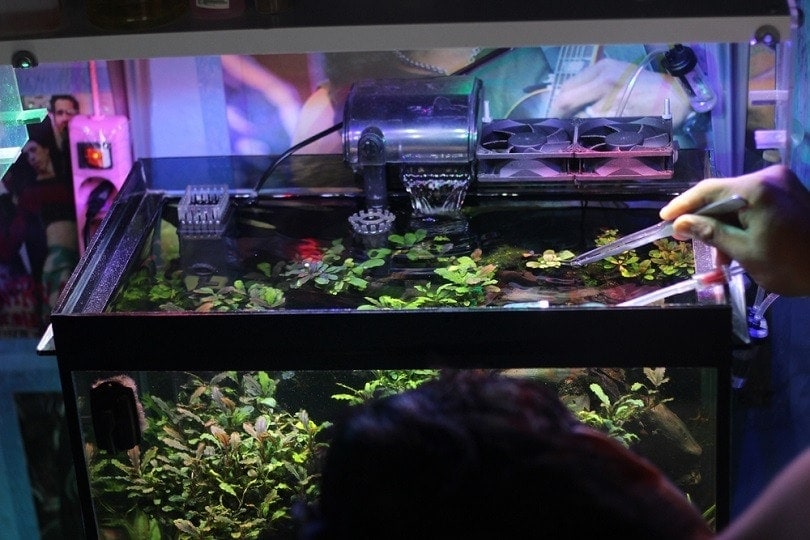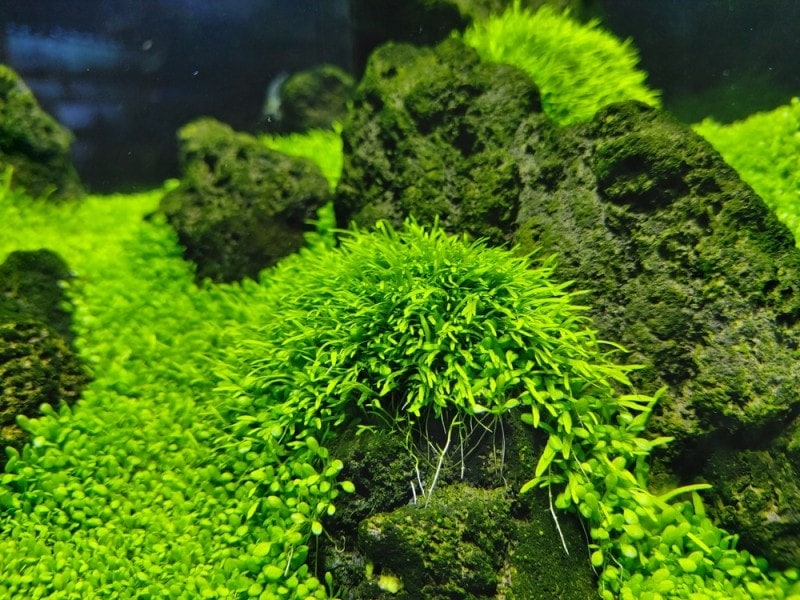How Long Does it Take to Dechlorinate Water? Methods & Tips

Updated on

Click to Skip Ahead
Your tap water contains chlorine and chloramine. These substances help to kill organisms that can make humans sick. However, these compounds can be harmful to your pet fish. Dechlorination is the process of removing chlorine and chloramine from water. It is a necessary task each time you clean out your fish tank.
Without the aid of dechlorinating substances, it takes about 24 hours for standing water to dechlorinate on its own. Different products can be used to speed up this process so you can get your fish safely back to their tank. Keep reading to learn about why it is important to dechlorinate your fish’s water and the best ways to do so.
 Why Do I Need to Dechlorinate the Water in My Fish Tank?
Why Do I Need to Dechlorinate the Water in My Fish Tank?
Although it is good for humans to have a little chlorine in our water to protect us from bacteria and parasites, fish do not need it. The chlorine in water can harm your fish by attacking the membranes of the gills.
Chlorine also attacks bacteria that are beneficial to your fish. A lack of good bacteria in your tank can lead to an over-production of ammonia, which can be deadly. Not removing the chloramine can also cause dangerously high levels of ammonia in your fish tank.
Dechlorinating allows the bacteria levels in your tank to maintain a healthy level that prevents ammonia buildup and protects your fish’s gills.

The Best Methods of Dechlorinating Your Fish Tank
There are several proven methods that work to dechlorinate your fish tank quickly and effectively. These include:
1. Standing water
This method of dechlorination takes more time than some of the others. It also can leave the water open to other contaminants and won’t get rid of the chloramine. However, in the absence of other choices, it is an acceptable way to dechlorinate the water so it can be used in your fish tank.
2. Boiled water
Boiling the water and allowing it to cool is another method of dechlorinating tap water for use in your fish tank. It takes about an hour of boiling to rid 10 gallons of water of chlorine and chloramine. After accounting for time to allow the water to cool, this is another more time-consuming method of water preparation, but still effective.

3. Water Softener
Water softeners must be paired with a filter to work. Some are sold with activated charcoal which acts as a filter and cleans the chlorine from the water. You should make sure that the softener you use has activated charcoal in it.
4. UV lighting
Ultraviolet lighting will also help remove chlorine and chloramine from the water in your fish tank. You’ll need a UV sterilizer that emits at least 254 nm wavelength with a density of 600 ml to be effective.

5. Water conditioner
The amount of time a water conditioner will take to dechlorinate your fish tank depends on the brand of conditioner you purchase. However, most will be effective in about 20 to 30 minutes. Most high-quality water conditioners will remove both chlorine and chloramine in this amount of time. You should always read the label to see what the product’s capabilities are.
6. Vitamin C
Vitamin C filters are another option for water dechlorination. These come in tablet form and work to neutralize the chlorine in your tank’s water. They are safe for fish and easy to use—just drop the tablet in and let it do its job. Generally, they will take about 5 minutes to work.

7. Water de-chlorinator
If you don’t want to purchase a water conditioner to dechlorinate your fish tank, you can make your own. You’ll need sodium thiosulfate. Mixing this compound with water will allow you to create a solution you can then use to treat the water in your fish tank.
It’s a great, affordable method that takes between 5 and 30 minutes to work, depending on the size of the tank and the chlorine levels in your water.
8. Aerating
Aeration is an effective method used to speed up the dechlorination process. When bubbles are added to the tank’s water, the increased circulation speeds up the process. This method still takes longer, however, effectively dechlorinating the tank in 12 to 24 hours.

9. Activated carbon filters
You can also purchase a carbon filter to dechlorinate your fish tank. These filters are highly effective and will also remove chloramine. The amount of time it will take to be effective can vary depending on the filter you buy and the size of your tank. You will also need to continue to monitor the water carefully as these filters don’t last for a long time and will need to be replaced regularly.
 The Importance of Aquatic Plants
The Importance of Aquatic Plants
If you are using a dechlorinator that only removes chlorine, not chloramine, you will want to utilize aquatic plants in your tank. Look for plants that help remove ammonia from the water as these will counter the effect of chloramine and create a healthy balance of ammonia-destroying bacteria in your tank. Pothos, hornwort, and java moss are a few good examples.

Always Test!
Whichever method you decide to use to dechlorinate your tank, you’ll need to test the water to make sure it’s safe. If you return your fish to the tank too early or to water that hasn’t been effectively dechlorinated, it can be fatal. There are many testing strips and kits out there that you can use to keep your pet fish safe.
Final Thoughts
Dechlorination can be a quick or timely process depending on the method you choose. However, it is essential to have a healthy tank for your fish. Don’t forget to use aquatic plants and water testing products as well. Your fish will thank you!
Featured Image Credit: Open Mind Art, Shutterstock











